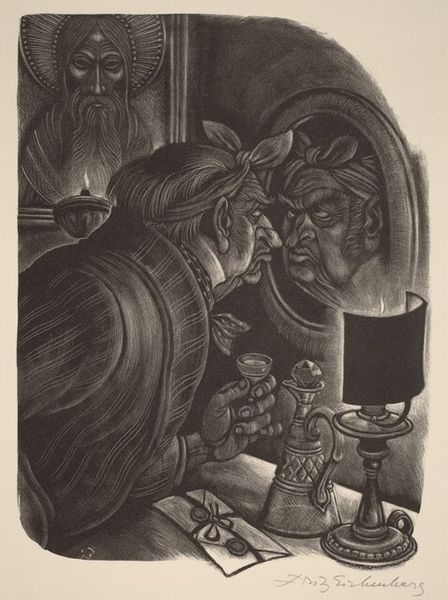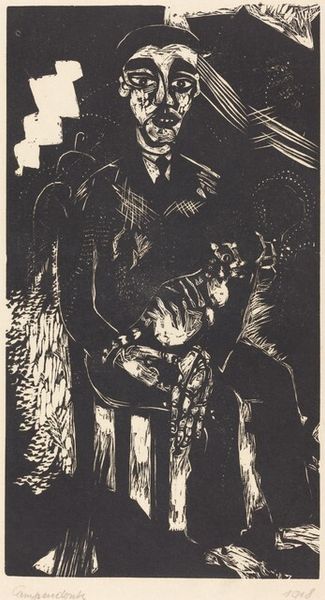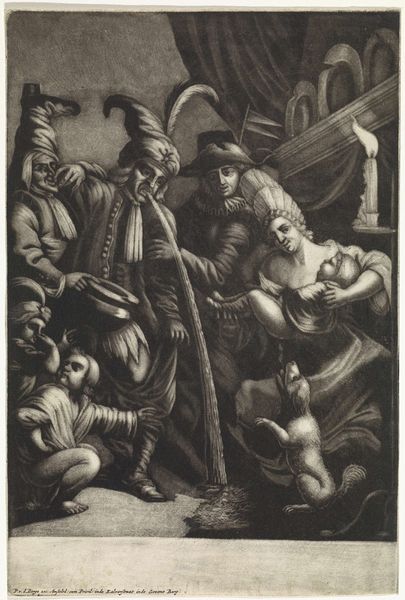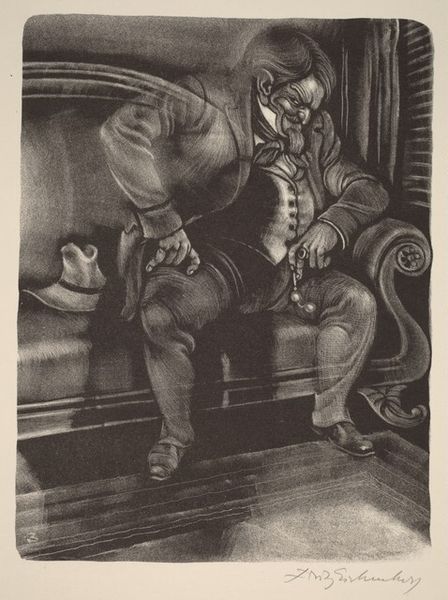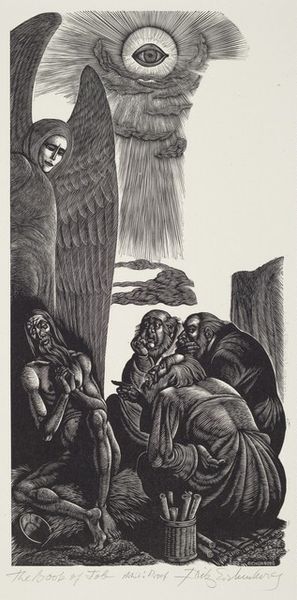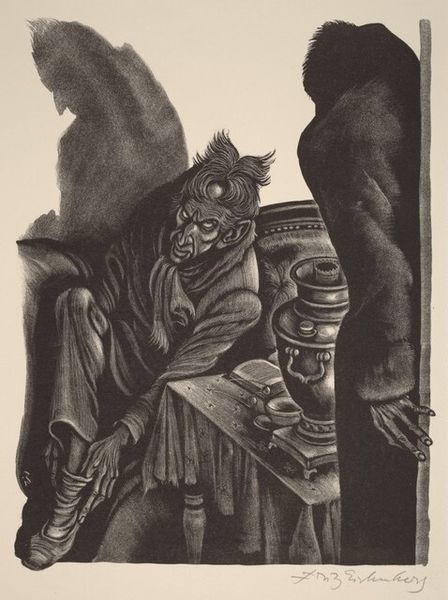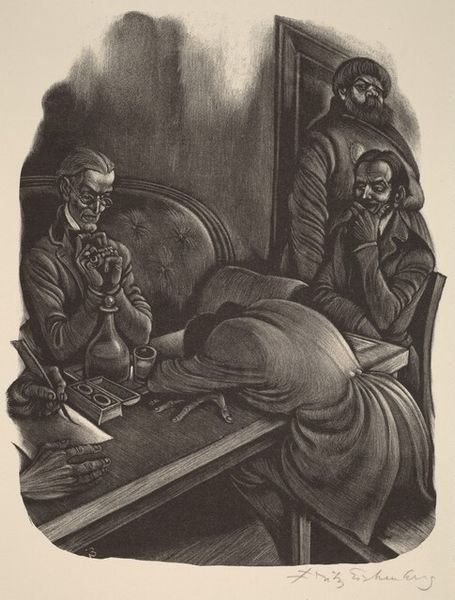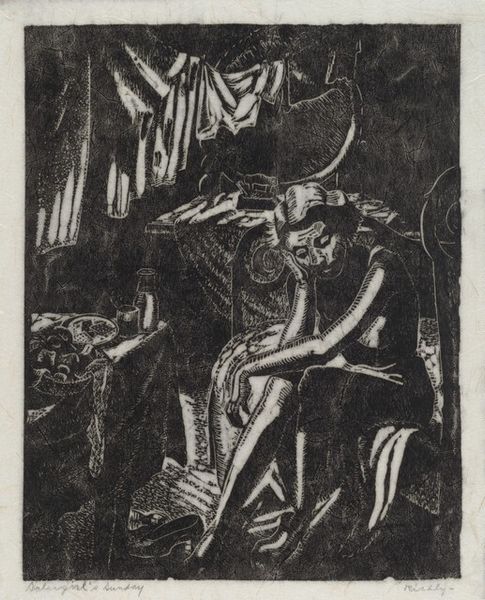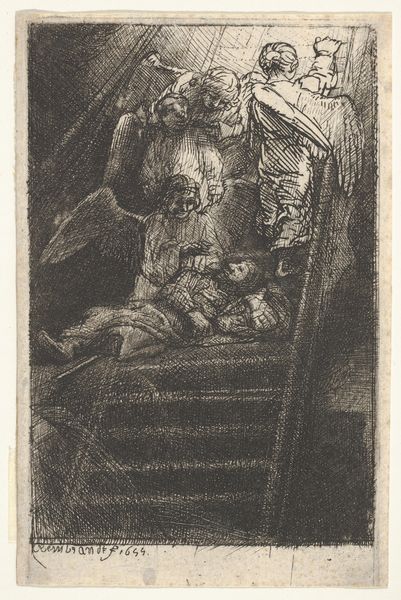
drawing, print, ink, charcoal
#
portrait
#
drawing
#
narrative-art
# print
#
pencil sketch
#
figuration
#
ink
#
pencil drawing
#
surrealism
#
portrait drawing
#
charcoal
Copyright: National Gallery of Art: CC0 1.0
Editor: We’re looking at Fritz Eichenberg’s “And His Strength Went From Him,” a print from 1955. It's incredibly dark and dramatic. The composition is dominated by these sharp, contrasting lines, and you can practically feel the weight of the scene. I'm struck by the depiction of the male figure - vulnerable and depleted. How do you interpret this work? Curator: From a materialist perspective, I find the medium of printmaking, particularly wood engraving as is possibly the case here, quite telling. Consider the labor involved—the carving, the inking, the pressing. It suggests a mass-produced narrative, making it accessible, disseminating its message widely. Are we seeing here a challenge to notions of fine art through the democratizing potential of print? What societal forces were at play in 1955 that might explain the demand for such a bleak, albeit biblically-inspired, image? Editor: So you’re focusing less on the narrative itself and more on the way that narrative is brought into existence and distributed? It's interesting to consider who would consume an image like this and how it might reflect social anxieties of the time. Curator: Precisely. And beyond distribution, we can also focus on the materials used—the paper, the ink—and their sourcing. Where were these materials coming from? Who was involved in their production and at what cost? How does the stark, almost industrial nature of the print relate to anxieties around industrialization that peaked at that point? Considering these factors roots the artwork within the economic realities of its time, offering a critique of traditional interpretations that may focus exclusively on symbolism. Editor: I hadn't considered the environmental and social impacts embedded in the materials themselves. That gives me a whole new lens through which to view art. Curator: It's crucial. Understanding the means of production is as important as understanding the artist’s intention. We need to question not just *what* the artist depicts, but *how* and at whose expense. Editor: That's a powerful takeaway. Looking beyond the surface to understand the tangible realities behind the creation of art, you highlight the labor and materiality involved in this image’s creation. I never thought about it that way! Thanks!
Comments
No comments
Be the first to comment and join the conversation on the ultimate creative platform.

